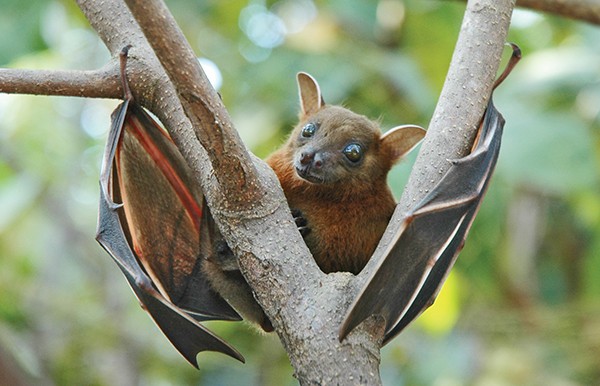
An unforgiveable headline maybe, but an apt one. Despite the fearsome associations attached to them, from aristocratic monsters to aristocratic ninja vigilantes, bats are inoffensive creatures that are critically integrated into the balance of our ecosystem.
October this year saw the launch of the book Irish Bats in the Twenty-First Century. This book is the culmination of the research so far into the bat population of the country as a whole, produced by researchers from Bat Conservation Ireland, with co-operation from the Centre for Irish Bat Research in University College Dublin and Queens University Belfast.
NewsFour spoke with Niamh Roche, a co-author of the book and Monitoring Scheme Co-Ordinator for the research projects.
“This book is the culmination of a lot of projects,” she explained. “Bat Conservation Ireland was formed in 2004 to address the fact that we had very little data on the bat population of Ireland. It’s been a very broad research project, since data has been so lacking.”
Bats are more readily associated in people’s minds with rural environments, so we were curious to know if there were solid numbers on the city-dwelling bat, if there is such a thing. There most certainly is, as it turns out, but the specifics are still a way off. “Our data isn’t yet fine-tuned enough to get in-depth on specific localities,” said Byrne. “There are nine species resident in Ireland, and we have found populations of three of them in Stephen’s Green, for example. The three things they rely on are the presence of greenery, roosting sites and waterways.”
With its empty buildings, rivers and canals, Dublin is thought to have a healthy bat population, although the noise levels and artificial lights will limit widespread distribution of their colonies. As part of the citizen science aspect of the research, over 300 volunteers, working in pairs and equipped with ultrasound detectors, have been patrolling the country’s waterways in search of the inaudible calls of our various native species. Byrne concurred that the Dodder and the Grand Canal are likely sites for them. Anyone got an ultrasound detector?
The paved environments of the city mean only the more adaptable of the bat species are likely to be city-based. The other issue is, as mentioned, the light factor. “Bats have very sensitive eyes, so even though you will likely see insects congregating around streetlights, they’re attracted by the ultra-violet portion of the light; bats have very sensitive sight and may well find streetlights painful to be near. There’s also the possibility that they might be made visible to predators.
The chief merit of bats is that they are voracious consumers of insects: In Ireland, Pipistrelle bats, a physically small species, can consume up to 3,000 insects in a single night! These are most likely to be midges but can be larger bugs where available. There are still no hard numbers for Ireland, but in the US it is thought that 3.7 to 35 billion dollars is saved in pesticide costs by the indigenous bat population.
Bat Conservation Ireland and its associates continue to research these matters. If you’re interested in learning more or volunteering, check out batconservationireland.org and also look out for Irish Bats in the Twenty-First Century in bookstores and online.
By Rúairí Conneely

